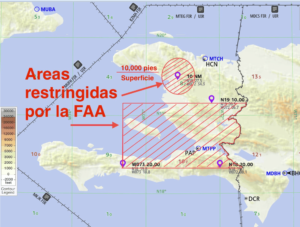

The Mexican Caribbean destinations that are grouped in Quintana Roo have been growing so far this year at a rate below that of the Dominican Republic, which thus demonstrates that they have overcome events such as Americans traveling more to Europe, or the supposed crises with airplane manufacturers, or even natural phenomena.
Thus, during this year, the Dominican Republic received 6,968,623 tourists between January and July, which represents 11% more than in the same period in 2023, according to data from the Ministry of Tourism. On the other hand, Quintana Roo projected a 5.4% growth for the summer compared to the same season last year.
For the Dominican Republic, with Punta Cana as the destination, its main markets, as for QRoo, are the United States, which represented 55% in the first half of the year, and Canada, with 15%, followed by Colombia, Argentina and Puerto Rico.
For its part, the Mexican Caribbean has been affected by the reduction of tourists from its four main Latin American markets: Colombia, Brazil, Peru and Ecuador; but, in addition, the average number of American tourists has also decreased, compared to other Caribbean destinations such as the Dominican Republic.
As reported by REPORTUR.mxQuintana Roo hoteliers projected an occupancy rate of over 80% for this summer, but there are several reasons that have played against them, which is why they have only reached 78%, as announced by Jesús Almaguer, president of the Association of Hotels of Cancun, Puerto Morelos and Isla Mujeres. (QRoo: hoteliers list reasons for low occupancy this summer).
The director of the Quintana Roo Tourism Promotion Council (CPTQ), Andrés Martínez Reynoso, justified that “it is a fact that we are in a cycle where many American tourists preferred to Travel to Europe, but we continue to be a key destination due to our proximity and attractiveness” (CPTQ admits that Americans preferred to Travel to Europe).
The Tulum Hotel Association had indicated that the drop in occupancy this summer for Tulum and in general for the Mexican Caribbean, is due to the lack of promotion and the drop in the number of arriving Flights, due to the problems with Boeing and Airbus planes.
David Ortiz Mena, president of the Tulum Hotel Association, emphasized that “what is more important than blaming factors such as digital platforms, is to see how to improve the image of the destinations, find solutions to current challenges, and, especially, see how to recover institutional promotion by the federation” (Tulum: collapse of Hotel occupancy is due to lack of promotion).
Likewise, Cancun hoteliers asked the CPTQ for another strategy to promote destinations in the northern part of the state, given the great disappointment they experienced with occupancy below 70% during the summer, which represented drops of up to 15 points.
“We had summers with 90% occupancy, and now we need to work on more promotion to attract more visitors, so that the other seasons are positive and this leads to more tourism,” said Jesús Almaguer Salazar, president of the Hotel Association of Cancún, Puerto Morelos and Isla Mujeres, who pointed out that Hurricane Beryl, sporting events such as the Olympic Games and the Copa América soccer tournament had an influence, which is why he believes more promotion should be done.
Rival countries in the Mexican Caribbean have been launching strong advertising campaigns, and hoteliers in Cancun also pointed out that there are new competitors, trends, and especially the United States, the main market, which is investing in promotional campaigns to attract domestic tourism (Cancun: hoteliers ask the CPTQ for another strategy after disappointments).




